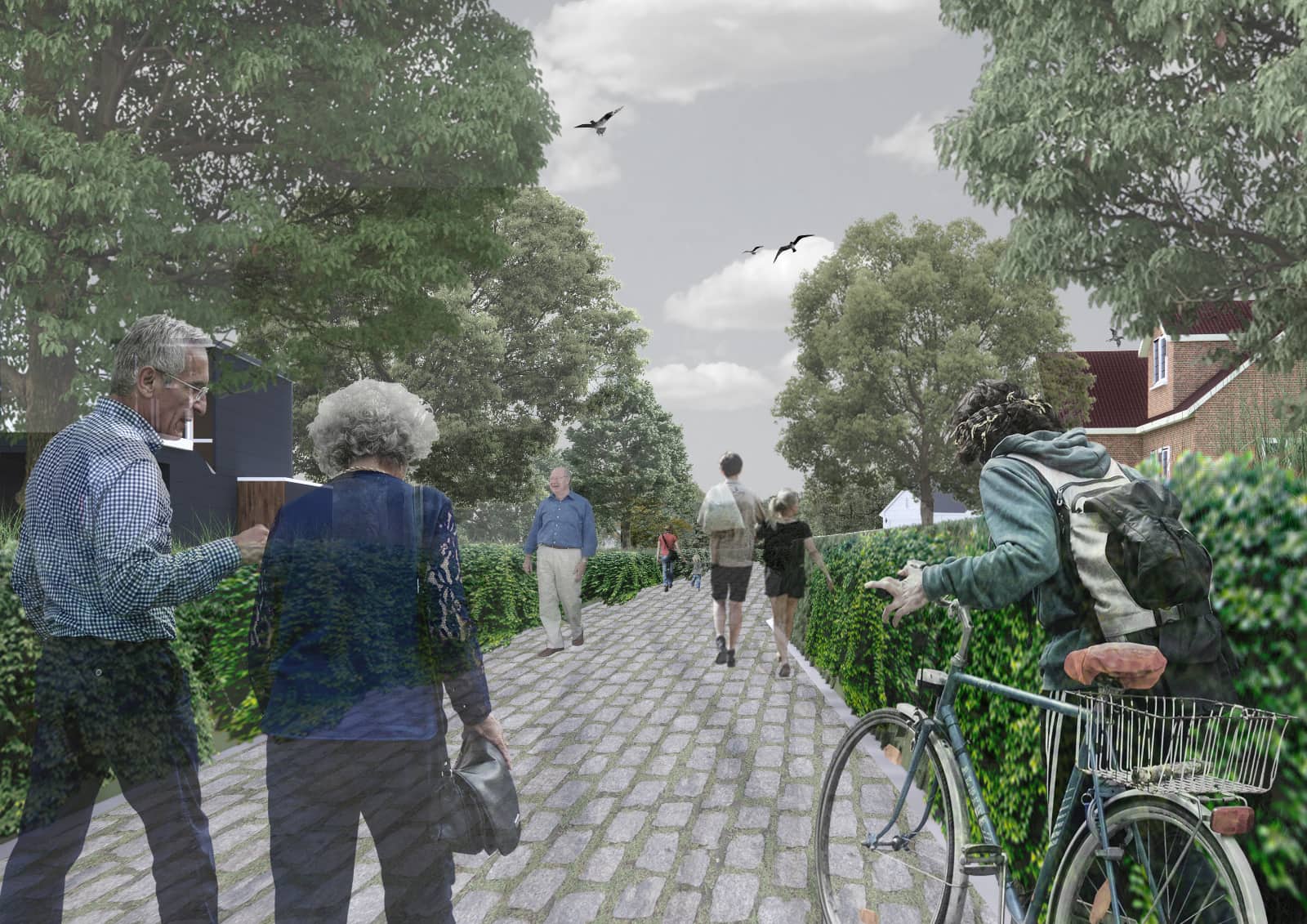Research-by-Design on the Hollow Roads of the Western Witness Hill of Leuven
Downloads
DOI:
https://doi.org/10.47982/spool.2025.1.04Keywords:
Forest Urbanism, Landscape Architecture, Landscape UrbanismAbstract
If the ambition of the Flemish territory is to become more forested, then an approximation is needed between forest and urbanization processes. Forest expansion can only be realized by developing a new understanding between forest and urbanization. This article discusses urban design explorations that stimulate a spatial transformation grafted on the forest as a structuring element of the Western Witness Hills of Leuven, through the ‘forest figure’. The forest figure is explored as a concept able to incorporate and mould urban and forest ambitions into a workable spatial frame.
How to Cite
Published
References
Agentschap Natuur en Bos. (2018). Boswijzer. Retrieved 27/09/2018 from https://www.natuurenbos.be/boswijzer
Aggestam, F., & Pülzl, H. (2018). Coordinating the Uncoordinated: The EU Forest Strategy. Forests, 9(3), 125. https://doi.org/10.3390/f9030125 DOI: https://doi.org/10.3390/f9030125
Bos+. (2018, 19/02/2018). Opinie | Komt het ooit nog goed tussen Schauvliege en de bosoppervlakte? (deel I)
Harrison, R. P. (1992). Forests : the shadow of civilization. University of Chicago. DOI: https://doi.org/10.7208/chicago/9780226318059.001.0001
Konijnendijk & Van den Bossch, C. C. (2008). The forest and the city : the cultural landscape of urban woodland. Springer.
Konijnendijk, Van den Bossch, C. C., Nilsson, K., Randrup, T. B., & Schipperijn, J. (2005). Urban forests and trees. Springer.
Mens en Ruimte. (1996). De gewenste bosstructuur voor Vlaanderen. Visievorming, selectie en globale afbakening/differentiatie voor de gebieden of elementen op schaal 1/50.000 door de overheidssector “Bosbouw”.
Randrup, T. B., Konijnendijk, C., Dobbertin, M. K., & Prüller, R. (2005). The concept of urban forestry in Europe. In C. C. Konijnendijk, K. Nilsson, T. B. Randrup, & J. Schipperijn (Eds.), Urban forests and trees (pp. 9–20). Springer. DOI: https://doi.org/10.1007/3-540-27684-X
Rekittke, J. (2023). Urban Forests, Forest Urbanisms Global Warming. Journal of landscape architecture, 18(1), 109-110. https://doi.org/10.1080/18626033.2023.2258731 DOI: https://doi.org/10.1080/18626033.2023.2258731
Shannon, K., Cavalieri, C., & Konijnendijk, C. (2023). Urban forests, forest urbanisms and global warming: Developing greener, cooler and more resilient and adaptable cities. Journal of landscape architecture, 18(1), 8-13. https://doi.org/10.1080/18626033.2023.2258720 DOI: https://doi.org/10.1080/18626033.2023.2258720
Viganò, P. (2024). Biopolitical Garden: Space, Life, Transition. Actar D.
Wambecq, W. (2019). Forest Urbanism in the Dispersed Flemish Territory. Bosstedenbouw in de Vlaamse nevelstad.
Wambecq, W., De Meulder, B., & Rojals, M. (2023). Forest Urbanism : in the Dispersed Flemish Territory. Fundación Arquia.





